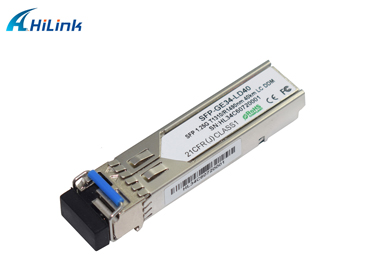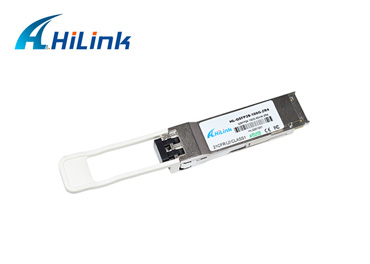SFP vs SFP+ vs SFP28 vs QSFP+ vs QSFP28
Jun. 21, 2022
Selecting the right connector is essential to building a network that functions correctly at an efficient price point. There are five form factors: SFP, SFP+, SFP28, QSFP+, and QSFP28. They are substantially more popular than the rest in the world of fiber connectivity. But, How to choose between these five form factors? What are their differences?
Comparison: SFP vs SFP+ vs SFP28 vs QSFP+ vs QSFP28
SFP vs SFP+
Same size with different speed and compatibility. SFP+ is used in 10-Gigabit Ethernet applications while SFP is for 100BASE or 1000BASE applications. SFP complies with standards of IEEE802.3 and SFF-8472 while SFP+ is based on SFF-8431. SFP+ ports can accept SFP optics but at a reduced speed of 1 Gbit/s. And an SFP+ transceiver can not be plugged into an SFP port, otherwise, the product or port may be damaged. Normally, SFP+ is more expensive than SFP.
1.25G BIDI SFP 40KM
SFP+ vs SFP28
SFP+ is mainly linked to 10G, while SFP28 is commonly associated with 25G connections. They use the same form factor, and the pinouts of SFP28 and SFP+ connectors are mating compatible. So SFP28 will work with SFP+ optics but at a reduced speed of 10 Gbit/s. And SFP+ modules will work well with the SFP28 port on a network switch if the port can be set up for 10G transmission, otherwise, the SFP+ modules can not work.
SFP+ vs QSFP+
The primary difference between QSFP and SFP is the quad form. QSFP+ is an evolution of QSFP to support four 10 Gbit/s channels carrying 10-Gigabit Ethernet, 10G Fiber Channel, or InfiniBand, which allows for 4X10G cables and stackable networking designs that achieve better throughput. QSFP+ can replace 4 standard SFP+ transceivers, resulting in greater port density and overall system cost savings over SFP+.
Hilink 100G QSFP28 ZR4 Optical Transceiver
SFP28 vs QSFP28
SFP28 and QSFP28 transceivers actually adopt different sizes and working principles. SFP28 supports only one channel with 25 Gbit/s, while QSFP28 supports 4 separate lanes, and each is 25 Gbit/s. Both of them can be used in 100G networks, but the SFP28 is applied in the form of QSFP28 to the SFP28 breakout solution.
It's clear that the main driving force behind the evolution of optical transceivers is the need to achieve higher bandwidth rates with smaller form-factor. In modern, dense networks, small form factors are a constant necessity. After a clear understanding of them, you also have to consider your network traffic, transmission distance, and future-proof networking requirements for ensuring the right selection.














